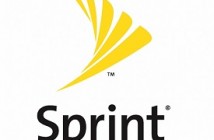Tesla has captured the enthusiasm and imagination of investors all over the world. The electric car company holds a current valuation of nearly $1 million per vehicle expected to be sold this year. While it is true that Tesla’s electric vehicles exceed a typical car not only in technology but also in price (the price of Tesla’s Model S starts at approximately $70,000 in the United States), the only way Tesla can justify such a valuation for its company is it can push its sales volume to that level.
If you compare Tesla Motors to Daimler (OTCPK: DDAIY), a luxury car company, Tesla must reach a sales volume of at least 500,000 electric vehicles per year to justify its current stock price. Daimler’s market cap is currently at $85 billion and sold more than .5 million cars last year. On the other hand, Tesla’s market cap is just under $31 billion, and has only sold about 20,000 units worldwide last year, and plans to sell 35,000 by the end of this year. Clearly, its sales figure is nowhere close to that of Daimler’s, but its valuation is extremely high.
There are also high expectations for the year 2017, when Tesla’s Model 3, which was formerly dubbed Model E, will be launched onto the market. The Model 3 is targeted towards a lower income bracket, with a $35,000 price tag for a base model.
Even with expected future successes, Tesla’s current valuation is illogical – its sale goal for 2020 of 500,000 is far from being achievable by the American electric car company.
There are two major challenges that Tesla must overcome. The first is the growing market competition in a rapidly expanding market, but is still considered a niche market. The electric car market does not show any signs that it will move out of the niche classification any time soon. The other obstacle is the United States Federal Government EV’s subsidy policy, which may hurt Tesla’s sales by given an advantage to its competitors.
The Competition
In the realm of electric vehicles, Tesla comes out on top when it comes to travel range. As a matter of fact, other competitors such as the Chevy Volt cannot even be considered 100% electric vehicles because their incredibly limited range that it can go on solely electricity. The Volt only has a range of 38 miles per full electric charge.
Another alternative is the BMW i3, which can go 81 miles on one full charge. Customers also have the option to select the gasoline powered engine which extends the vehicle’s range and allows the vehicle to travel a total of 140 miles.
Tesla’s vehicles are 100% powered by electricity, such as the Model S, which has a range of p to 300 miles. Tesla’s Model X is expected to have a range as large as 260 miles. The company’s Model 3, which is expected to launch in 2017, will have a range of approximately 200 miles. Needless to say, Tesla is miles ahead of its competition at this time.
However, if we really think about it with practicality in mind, BMW (ETR: BMW)’s i3 is generally the more appealing option. Tesla’s charging stations are not very widespread or abundant across the United States, and if one were to make a cross country trip in a Tesla, the feat would be near impossible. The BMW i3, on the other hand, could make that trip, since it has a high enough gasoline powered range to travel from one gas station to the next.
Other considerations include the dependence on the electric power grid in order to ensure personal transportation, which is not always a good thing. A car that runs on gasoline can be fueled more easily given that most households do have a couple gallons of fuel sitting in their garage. Gas stations also run on generators, so even if the power goes out, they can still dispense fuel. On the other hand, if the power goes out, and the household has a back up electric generator at home (which few do), it would be a tough decision to choose between using the generator to charge the electric vehicle or to power the fridge.
Additionally, price is also an issue. The Tesla Model S has a base price of $70,000, before government subsidies are factored in. The Model X has a price point that starts at $80,000. The Model 3, which is supposed to be geared towards average consumers, has a lower price point starting at $35,000, which is still more expensive than most households are willing to spend on a small car.
Mercedes sells an all electric powered vehicles with a range of 85 miles for a price as low as $34,000. The BMW i3 starts at $46,000 with the range extending gasoline engine. The Nissan (OTCMKTS: NSANY) Leaf retails for $29,000.
These car companies also all have the backing of extensive mass production factories and sales facilities, established brands, and a massive customer base. The electric vehicle market around the world is small, but growing at breakneck speeds. Global monthly sales already doubled in the first seven months of this year. While Tesla clearly has room to grow, the competition will become more and more fierce.
Loss of Subsidies For Electric Vehicles
The United States Federal government provides a subsidy for electric vehicles. However, there is a clause that states that the subsidies will no longer be provided for the manufacturer once the company sells 200,000 electric vehicles in the United States market. At this rate, Tesla seems to be one of the first electric vehicle companies that will reach that 200,000 mark, thus losing the subsidy and resulting in its competitors to have a pricing advantage of almost $7,500. If we look at Tesla’s sales trends in the Unite States, it seems that the stoppage of the government subsidy will occur at an incredibly inconvenient time – right when the more affordable Model 3 goes on sale.
More and more competitors are entering the electric vehicle market, which means that this pricing disadvantage could continue for many more years. While Tesla will likely hold the technical advantage for many more years, it will undoubtedly lose the battle on the pricing side.
Given these factors, it is unlikely that Tesla will reach their goal of 500,000 vehicles per year by 2020. At the moment, the total electric vehicle market around the world is nowhere close supporting such a sales volume.





Pingback: 3displays
Pingback: 1bespoke
Pingback: ห้องพักรายวันรามอินทรา
Pingback: ทีเด็ดฟุตบอล
Pingback: Buy Apple Airpods Pallet
Pingback: mercedes hash
Pingback: บุหรี่นอก
Pingback: dee88
Pingback: ปั้มติดตาม
Pingback: บุหรี่นอก
Pingback: กฎหมายภาษี
Pingback: ร้านสักคิ้ว สีลม
Pingback: sell drugs
Pingback: Ulthera
Pingback: บับเบิ้ล
Pingback: โปรโมชั่น
Pingback: ป้ายแท็กสินค้า
Pingback: ทางเข้าpg168
Pingback: Daha fazlasını öğrenin
Pingback: ออกแบบตกแต่งภายในบ้าน
Pingback: Al Yarmouk University College
Pingback: ข้อดีของการเพิ่มยอดวิว
Pingback: Carolyn
Pingback: pg168
Pingback: 1xbet
Pingback: betflix wallet
Pingback: Mulch film
Pingback: thailand bus ticket
Pingback: แทงบอลสดกับ 3xbet
Pingback: 電子煙
Pingback: clothing manufacturer
Pingback: Buy Actavis cough syrup online in Sweden
Pingback: Atalanta U19 match
Pingback: 悅刻
Pingback: ตรายางออนไลน์
Pingback: หา Influencer
Pingback: jphoki scam